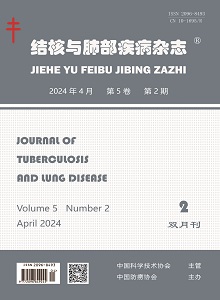Objective To analyze the clinical characteristics and influencing factors of culture-positive pulmonary tuberculosis patients coinfected with nontuberculous mycobacteria (NTM).Methods The observation group included 177 culture-positive pulmonary tuberculosis patients coinfected with NTM diagnosed in Hunan Chest Hospital from January to December in 2019; 124 patients only with culture-positive pulmonary tuberculosis from Hunan Chest Hospital during the same period were selected as the control group. Age, gender, concurrent underlying diseases, chief complaint symptoms, duration of anti-tuberculosis treatment, and results of tuberculosis-related laboratory tests (serum total protein (TP), serum albumin (ALB), serum IgA, and serum IgG) were collected. The clinical characteristics and influencing factors of culture-positive pulmonary tuberculosis coinfected with NTM were analyzed. Results In the observation group, 62.1% (110/177) were male and 33.9% (60/177) aged ≥61 years old, which were significantly higher than those in the control group (75.8% (94/124), χ2=6.230, P=0.013; 18.6% (23/124), χ2=35.681, P=0.000). Patients with bronchiectasis and diabetes in the observation group accounted for 26.0% (46/177) and 6.8% (12/177), respectively, which were significantly higher than those in the control group (10.5% (13/124), χ2=11.120, P=0.001; 21.8% (27/124), χ2=14.541, P=0.000). The level of serum IgA and IgG in the observation group were lower than those in the control group ((2.3 (1.7, 3.3) g/L vs. 2.7 (2.1, 3.6) g/L, Z=212.380, P=0.010; 13.6 (11.1, 15.4) g/L vs. 15.9 (12.5, 17.8) g/L, Z=181.190, P=0.003), respectively. The duration of anti-tuberculosis treatment in the observation group was 9.0 (5.0, 17.0) months, which was significantly longer than that in the control group (5.5 (2.0, 12.0) months) (Z=116.341, P=0.000). Multivariate logistic regression analysis showed that male (OR(95%CI): 1.941(1.061-3.572)), age ≥61 years (OR(95%CI): 1.196(1.050-2.501)), duration of anti-tuberculosis treatment ≥9 months (OR (95%CI): 1.865(1.090-3.191)), concurrent diabetes (OR(95%CI): 3.420(1.462-8.041)) or bronchiectasis (OR(95%CI): 2.390(1.121-5.130)) were risk factors for NTM pulmonary disease in culture-positive pulmonary tuberculosis patients. Conclusion Elderly, male, longer duration of anti-tuberculosis treatment, complicated with underlying diseases such as diabetes and bronchiectasis, were risk factors for NTM lung disease in culture-positive pulmonary tuberculosis patients.

 Wechat
Wechat